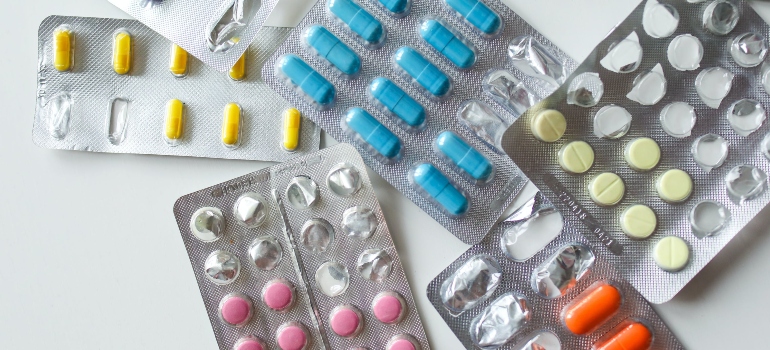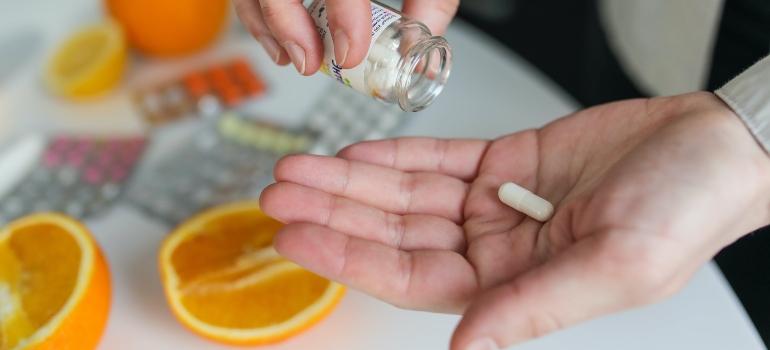Embarking on the journey of recovery from opioid addiction can be challenging, but taking the right steps toward a healthier life is crucial. In Parkersburg, where support and understanding play key roles, choosing the right medication-assisted treatment (MAT) is an important decision. Two commonly prescribed options are Methadone and Buprenorphine, each with its unique benefits and considerations. We’ll break down Methadone and Buprenorphine, explaining what makes each of them special to help individuals and their families understand medication-assisted treatment options in Parkersburg.
What Is Methadone?
Methadone is a synthetic opioid medication used in the treatment of opioid addiction, particularly for individuals recovering from heroin or other opioid dependencies. It belongs to the class of drugs known as opioids or narcotics. Methadone works by binding to the same receptors in the brain that are affected by other opioids, reducing withdrawal symptoms and cravings without producing the euphoric high associated with drugs like heroin.

Moreover, methadone is often prescribed as part of a comprehensive treatment plan known as Medication-Assisted Treatment (MAT), which combines medication with counseling and behavioral therapies to support individuals in their recovery journey. It helps to stabilize a person’s opioid dependence, allowing them to function normally without experiencing the intense highs and lows associated with drug use.
It’s important to note that methadone is typically dispensed through specialized clinics, such as Harmony Ridge Recovery Center, and its use is closely monitored by healthcare professionals to ensure safe and effective treatment.
The Benefits of Methadone
Methadone offers several benefits in the treatment of opioid addiction:
- Reduces Withdrawal Symptoms: Methadone helps manage and alleviate the physical withdrawal symptoms associated with opioid dependence. This includes reducing cravings, sweating, anxiety, and other discomforts.
- Keeps Things Stable: Methadone keeps the level of drugs in the body steady. This helps a person avoid feeling really good one moment and really bad the next, making daily life more predictable.
- Suppresses Cravings: Methadone acts on the brain in a way that makes a person want drugs like heroin less. This is important to stop them from going back to using drugs and helps them stay on the path to getting better.
- Long-Lasting Effects: Methadone has a relatively long duration of action, requiring only one dose per day in most cases. This convenience can improve treatment adherence and reduce the risk of missed doses.
- Supports Normal Functioning: Unlike illicit opioids, methadone does not cause the euphoric “high” associated with drug abuse. This allows individuals to function normally, engage in daily activities, and focus on their recovery.
- Reduces the Risk of Overdose: Since methadone is administered in controlled and monitored settings, the risk of overdose is significantly reduced compared to the use of illicit opioids.
What Is Buprenorphine?
Buprenorphine is another medication that helps people dealing with opioid addiction. Like methadone, it has its own set of benefits. Buprenorphine works by attaching to the same parts of the brain that opioids do, helping to ease withdrawal symptoms and cravings. It provides a more controlled and milder effect compared to other opioids, making it a safer option. Buprenorphine can be prescribed by specially trained doctors and can sometimes be taken at home, offering a bit more flexibility in the treatment process. This medication also plays a role in stabilizing a person’s dependence, supporting them in their journey to overcome addiction. Just like methadone, it is often part of a comprehensive treatment plan that includes counseling and behavioral support for better chances of success in the recovery journey.
How Does It Work?
Buprenorphine is a partial opioid agonist, which means it binds to the same receptors in the brain that opioids attach to but activates them to a lesser extent compared to full agonists like heroin or methadone. This partial activation produces enough of an effect to prevent withdrawal symptoms and cravings but without causing the intense euphoria associated with other opioids.

Buprenorphine’s unique mechanism has a “ceiling effect,” meaning that after a certain dose, its effects level off, and taking more does not produce a stronger response. This property makes it safer than full agonists, as it lowers the risk of respiratory depression and overdose.
Additionally, buprenorphine has a high affinity for opioid receptors, meaning that it strongly binds to these receptors. This high affinity helps block the effects of other opioids. If someone takes another opioid while on buprenorphine, the buprenorphine will compete for the receptors, reducing the impact of the other opioid.
Methadone vs Buprenorphine: Effectiveness
Methadone, as a full opioid agonist, has a robust effect in stabilizing opioid dependence. It effectively binds to the brain receptors, providing a sustained and consistent level of opioid activity. This stability helps individuals avoid the extreme highs and lows associated with drug use, contributing to a more predictable daily life.
On the other hand, Buprenorphine, being a partial opioid agonist, offers a controlled and milder effect. It has a ceiling effect, meaning that after a certain dose, taking more does not result in a stronger response. This property enhances safety by reducing the risk of respiratory depression and overdose.
In terms of preventing withdrawal symptoms and cravings, both Methadone and Buprenorphine are effective. However, the choice between the two depends on factors such as the severity of addiction, the need for a structured treatment environment, and individual preferences. Methadone, with its longer-lasting effects and close monitoring, might be better in cases where a more intensive approach is necessary. On the other hand, Buprenorphine’s safety features and flexibility could make it a suitable choice for individuals who can benefit from a less supervised treatment plan.
Methadone vs Buprenorphine: Side Effects
When comparing the side effects of Methadone and Buprenorphine, it’s crucial to understand that both medications may lead to varying side effects in terms of nature and severity. Methadone, for instance, can cause drowsiness or sedation, particularly when initiating treatment or adjusting the dosage. Constipation is another common side effect, a typical characteristic shared with many opioids. Weight gain is a potential side effect experienced by some individuals using Methadone, and excessive sweating is also observed, especially during the initial phase of treatment. Additionally, Methadone use can lead to sexual side effects like decreased libido and erectile dysfunction.

On the other hand, Buprenorphine may induce nausea, with this side effect often improving over time. Headaches can be experienced during the initial stages of Buprenorphine treatment, and sleep-related issues, such as difficulty falling or staying asleep, may occur. Sweating is a side effect shared with Methadone, particularly in the early stages of Buprenorphine treatment. Buprenorphine’s sublingual formulations may cause a tingling or numb sensation in the mouth or tongue.
Both Methadone and Buprenorphine share common side effects typical of opioid medications. Dizziness is a potential side effect of both medications, especially when standing up quickly. Constipation is another side effect, but preventive measures can help with this particular aspect of the treatment.
Addiction Issues in West Virginia
West Virginia faces significant challenges related to addiction, and the impact of substance abuse is a complex issue affecting various aspects of the state. Here are some factors influencing addiction issues in WV:
- Opioid Epidemic: West Virginia has been particularly hard-hit by the opioid epidemic. The state has one of the highest opioid overdose rates in the country. Factors contributing to this crisis include the widespread availability of prescription opioids, economic challenges, and limited access to healthcare resources.
- Rural Nature and Economic Factors: West Virginia’s predominantly rural landscape poses unique challenges in addressing addiction. Economic struggles, including job loss and poverty, can contribute to higher rates of substance abuse as individuals cope with stressors.
- Impact on Families: Substance abuse impacts families in West Virginia, leading to broken relationships, strained households, and challenges in providing stable environments for children. The problem goes on from one generation to the next.
- Limited Treatment Resources: While there are efforts to expand addiction treatment services, West Virginia faces challenges in providing sufficient resources for individuals seeking help. Access to quality treatment, including medication-assisted treatment (MAT), counseling, and support services, remains a concern.
- Methamphetamine Concerns: While opioids are a major concern, there’s also a rising issue of methamphetamine use in West Virginia. The state has seen an increase in methamphetamine-related arrests and incidents.
Local Treatment Options in Parkersburg WV
Addiction treatment in Parkersburg is approached with a focus on providing comprehensive and supportive care to individuals struggling with substance abuse. Several treatment options and resources are available to address the diverse needs of the community:
- Medication-Assisted Treatment (MAT): Parkersburg treatment facilities, like many other places, use Medication-Assisted Treatment (MAT) to help individuals overcome opioid addiction. Methadone and Buprenorphine, as mentioned earlier, are commonly prescribed medications within MAT programs, such as fentanyl rehab in Parkersburg.
- Counseling and Therapy: Behavioral therapies and counseling play a crucial role in addiction treatment in Parkersburg. These sessions aim to address the psychological aspects of addiction and help individuals understand the root causes of their substance abuse.
- Inpatient and Outpatient Programs: Parkersburg offers both inpatient and outpatient treatment programs. Inpatient programs provide a structured and supportive environment where individuals can focus entirely on their recovery. Outpatient programs allow flexibility, enabling individuals to receive treatment while maintaining their daily responsibilities.
- Support Groups: Support groups, such as Alcoholics Anonymous (AA) and Narcotics Anonymous (NA), are an important part of addiction treatment in Parkersburg. These groups provide a sense of community, understanding, and shared experiences.
- Community Resources: Parkersburg has a network of community resources aimed at preventing and treating addiction. These resources may include educational programs, outreach initiatives, and collaborations with local organizations to raise awareness and reduce the stigma.
- Dual Diagnosis Treatment: Recognizing the connection between mental health and substance abuse, Parkersburg’s treatment programs often address co-occurring disorders. Dual-diagnosis treatment focuses on both addiction and underlying mental health issues.
- Rehabilitation Centers: An opiate rehab center in Parkersburg WV provides a range of services, including detoxification, residential treatment, and outpatient programs. Such centers often tailor their approaches to meet the unique needs of each individual.

Medication-Assisted Treatment Options in Parkersburg
Medication assisted treatment in Parkersburg WV is like having a personalized support team to help individuals struggling with opioid addiction. It involves using special medicines, such as Methadone and Buprenorphine, that act like shields against the tough parts of stopping strong drugs. People take these medicines every day, often in clinics where doctors and nurses make sure everything is going okay.
But it’s not just about the medicines – there’s also talking to counselors and therapists who really get what they’re going through. These conversations help them figure out why they started using drugs and how to deal with problems in a better way. MAT doesn’t just stop at the medical side; it reaches into the community, working with rehab centers in Parkersburg. These centers, such as West Virginia heroin rehab, play a vital role, offering a place for people to detox, get counseling, and learn how to live a life without relying on drugs.
Additional Therapies for Addiction
For the best results in addiction recovery, it is useful to combine addiction treatment with therapy. MAT goes hand in hand with talking to counselors and trying different helpful activities. One important activity is called cognitive-behavioral therapy (CBT), which helps change negative thoughts and behaviors linked to drug use.
There is also group therapy for addiction, where people share their experiences and ways to get better. Motivational interviewing helps boost the motivation to make positive changes, while contingency management rewards good choices. Families are part of the process, too, with family therapy to understand and support recovery. They’re also trying holistic things like mindfulness and stress reduction to help everyone feel better overall.

The Role of Medication-Assisted Treatment Options in Parkersburg
It’s clear that Medication-Assisted Treatment, or MAT, plays a big and important role in helping people overcome opioid addiction. MAT uses special medicines to make stopping drugs easier. It goes hand in hand with talking to counselors and trying different helpful activities. Whether it’s Methadone or Buprenorphine, medication-assisted treatment options in Parkersburg help manage withdrawal and cravings, making the journey to recovery smoother. In Parkersburg, people understand that everyone’s path to feeling better is different, and MAT is there to support each person in their unique journey.



